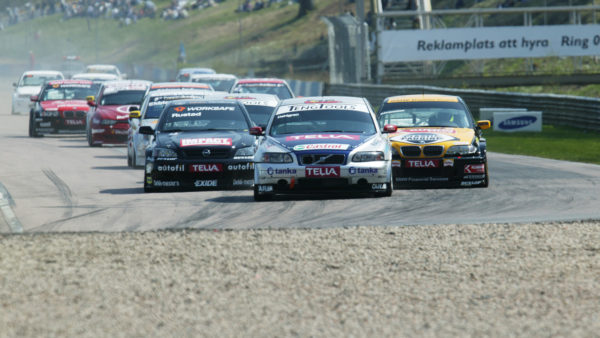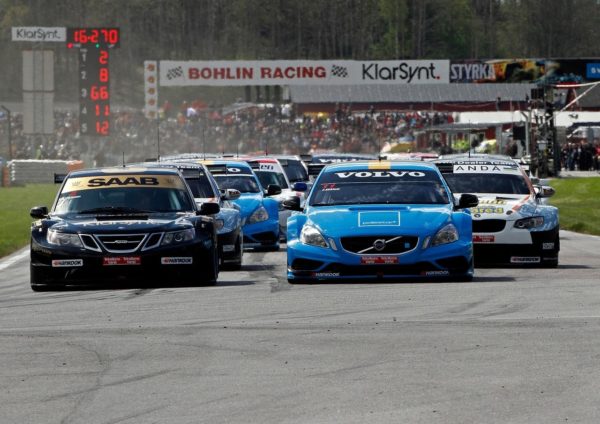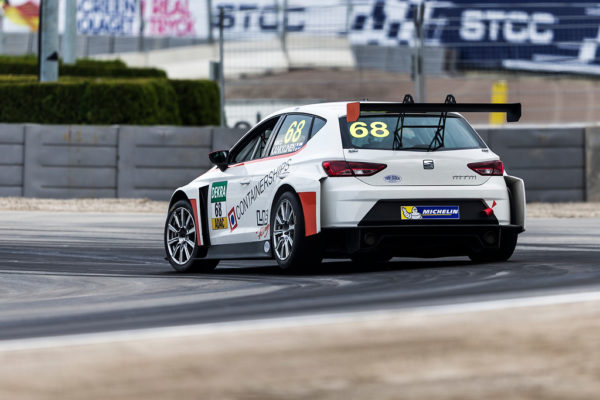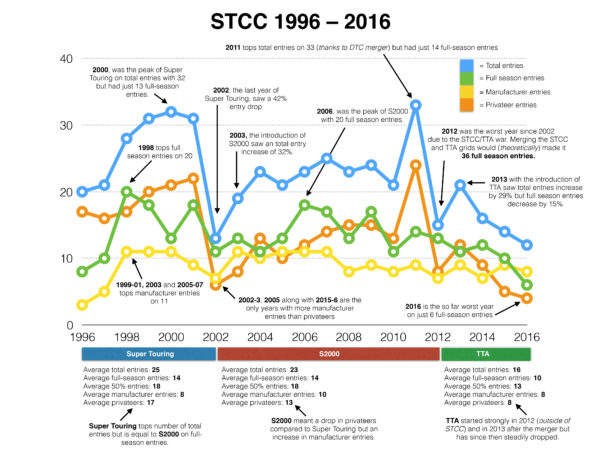STCC 1996 – 2016, a look back in history prior to new rules in 2017
The Scandinavian Touring Car Championship will switch to new rules for the third time in its 21-year history in 2017 when it adopts TCR. The debate is ongoing whether this is the right move, and how successful the previous Solution-F (TTA) regulation has actually been.
Join us as we take a look at the stats from the start of the championship in 1996 up to today.
1996 – 2002: Super Touring
The STCC was started in 1996, then known as the Swedish Touring Car Championship, and had two regulations for its first year: Super Touring and Nordic Touring.
Nordic Touring was a hybrid of the old DTM technical regulations, with BMW M3 E30s and Mercedes 190 W201s, equipped with Volvo engines, competing alongside Super Touring with a massive base weight difference. From 1997, only Super Touring was allowed.
Many consider Super Touring to be the most successful period of STCC. But was it?
Both yes and no. Super Touring had the biggest number of total season entries, but not full season entries. It did not have the highest average of manufacturer/importer entries, Super 2000 did.
Was the racing better? A subjective question of course, but the Super Touring years were not alone in having battles and controversies.
You might remember the titanic battle between Mattias Ekström and Tommy Rustad in 1999 or the fight between Jan ”Flash” Nilsson and Roberto Colciago in 2001. But S2000 had its fair share as well, with the Tommy Rustad and Thed Björk scandal in 2009 or the close fight between Rickard Rydell and Fredrik Ekblom in 2011.
While Super Touring died out in other championships around the year 2000, they continued until 2002 in the STCC. The fields were strong until the end, well almost. 2002 saw a major drop of 42% in entries, opening the way for something new.

2003 – 2012: Super 2000
The new regulations came in 2003 with Super 2000 (S2000). There were voices raised that this would mean the end of the STCC, with much slower and less spectacular cars.
However, the first year saw an increase of total entries of 32% and the graph continued to point upwards for the next six years. 2006 was the top S2000 year, with 20 full season entries and the total average of 14 full season entries from 2003 to 2012 is equal with the Super Touring era.
S2000 also holds the record of most number of total entries with 33 in 2011, but it should be noted that this is including part-season entries from the Danish series, the DTC.
Things were looking good for STCC with the S2000 regulations until around 2010 when full-entries started to drop and the STCC vs. TTA war started to brew during 2011, a season when the championship had arguably the strongest S2000 grid in the world with BMW, Chevrolet, SEAT, Volkswagen and Volvo represented.
The reason for the war was a disagreement over the regulations, as several alterations had been made to the S2000 regulations, allowing biofuel turbo cars and cars with either 1.6 turbo WTCC engines or 2.0 turbo BTCC (NGTC) engines. The STCC organisation and a number of teams wanted to continue with the existing regulations while a number of teams broke away, forming TTA.
The rest is history, but it should be noted that had the STCC and TTA grids of 2012 been added together, we would theoretically had 36 full-season entries. But reality is of course more complicated than that.

2013 – 2016: TTA
The war only lasted one year, with STCC adopting TTA regulations for 2013, seeing total entries increase by 29% although full-season entries decrease by 15% compared to the final S2000 year in 2012.
And 2013 was the only increase for the new TTA regulation, with the number of entries steadily dwindling since, with 2016 the worst year so far with just six full-season entries and 13 entries in total.
Was it due to the change to silhouette cars? Was it because of the remnants of the financial crisis of the late 2010s? Was it because of the war between the STCC and TTA in 2012?
There is no simple answer other than that the STCC was severely decimated by the war and has not been able to recover so far.

2017 – ?: TCR
A switch to the new TCR regulations was announced in June as the STCC organisation stated that they saw no future in the current TTA regulations, despite this meaning the exit of the only Swedish car manufacturer, Volvo from the championship.
The TCR technical regulation is still young after being introduced just last year, and while it’s expanding rapidly to many different countries, the demand for race cars from the current manufacturers almost exceeds their ability to supply.
The debate is ongoing as to whether this change is right or too early for the STCC, a topic we had a look into earlier this year.
Will TCR bring back STCC to the previous success of Super Touring and S2000? Will slower cars compared to the current regulations mean poorer racing and less success?
It is of course too early to predict, but it is important to note that the regulations are only part of the recipe of success and there are plenty of other factors affecting the end result such as the world economy and most importantly the ability of the organisers to promote the championship and to host race weekends.
The STCC has in the past managed to create a competitive championship with different kind of regulations. Can the current organisation do it again? The ball is in your court, STCC AB.











